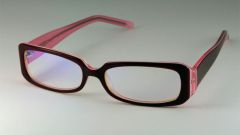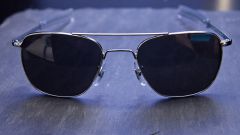Instruction
1
Try checking the model in store. Take two pairs of identical glasses and place one glass to another to match their center. Then turn one pair 90 degrees until not shifting the center of the lens. Take a look at glass the same points via other — it should be darker.
2
To check also fit the LCD screen of a mobile phone, a computer monitor, the TV. Look at it through the lenses of the glasses, and then turn them 90 degrees so that the axis of rotation coincided with the center of the screen and the lens. As a result, the image will become dark. If, however, any tilt angle of the screen, visible through the glasses, it remains light in your hands a simple accessory with tinted Windows, without polarizing filter.
3
Depending on the quality of the filter when the proposed method of lens obscured by 50-100%. For ordinary leisure suit budget models with partial coverage, it will be enough to mitigate the blinding effect, reducing stress and irritation of the eyes. Sunglasses with 100% coverage necessary for professional athletes and drivers, are passionate anglers and hunters.
4
When choosing glasses, pay attention to their purpose. Polarizing filters can vary in different series, as they are tailored to a certain range of light waves. Points for fishermen to 95% to reduce the brightness of the solar glare from water, small increase the contrast and sharpness of the image, the driver's cut off part of the spectrum oncoming headlights and reduce the effect of glare while driving.
5
Try to choose famous eyewear brands tested. Models from little-known firms or counterfeits can be of insufficient quality, with ineffective coating, offset from the optimum position of the optical axes. As a result, they will pass inspection with a liquid crystal display in the store, but may not be very useful for operation.
Note
Sometimes stores offer special test picture — when you look in the glasses you can see the picture of a fish. Actually it's only anti-glare test, showing the presence of a suitable cover.
Useful advice
When you select should pay attention not only to the presence of polarization, but also on the quality of the glass, number of layers of filters, the presence of distortion. If the points a little closer or separate items — it is better to refuse from the purchase, at constant wearing can damage eyesight.




